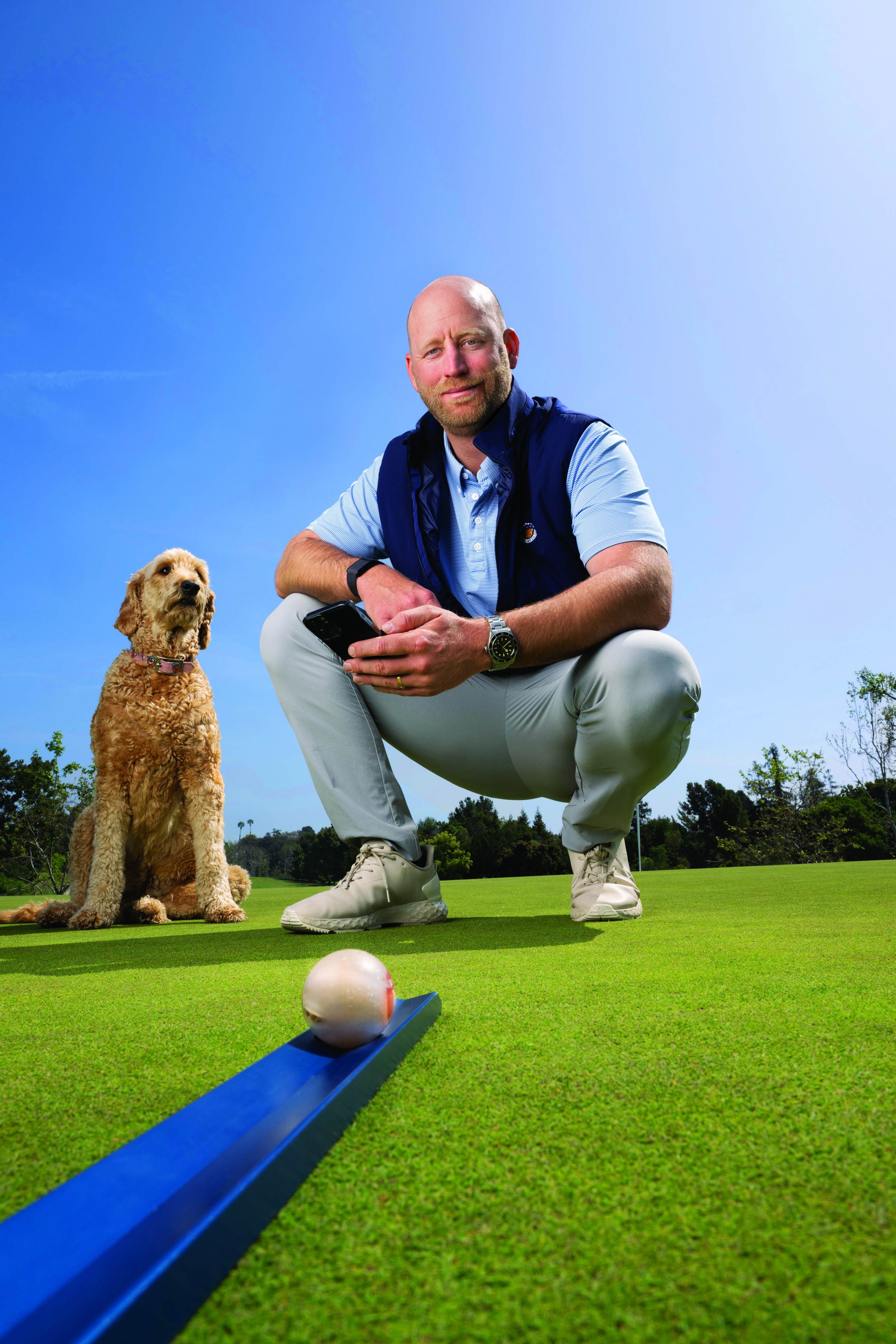Justin DePippo
Director of Golf Course & Grounds, Bel-Air Country Club, Los Angeles, CA
THE INTERVIEW
What do you like most about the GS3 ball?
I love how quickly and readily available all the data is. Firmness, green speeds, smoothness, trueness, moisture, organic matter results, everything we’re doing gets recorded and entered right away. Within seconds, I can pull up a weekly or monthly chart and see what our trajectory has been, how we’re doing for the week, and I can anticipate the direction we’re headed in. Or I can make a decision to adjust accordingly.
You’ve been collecting data for a year and a half: what have you learned?
I would say the big thing is how impactful everything is. For example, by not mowing and just rolling, your smoothness can be better. And you might not need to mow every day. Or seeing how consistent and true your greens are on day in, day out basis. It shows that we are providing consistent conditions. It’s nice to feel confident in all the decisions we’re doing. Before the GS3, we were going by a look and feel. So having that data behind you and being able to see the consistency, day to day, week to week, is great.
Has the GS3 and DEACON influenced your cultural management practices?
Definitely, it already has. I look at it every day to see where we’re going, where we’re at. Consistency is a big thing for me. We can’t manage every green the same. But being able to pull data from different areas of the golf course can help the conditioning be more consistent. And definitely it’s going to push us from doing everything the same. Being able to go through a year of making those different decisions, seeing what that results are, seeing the highs and the lows and being able to make those adjustments, that’s where we’re at.
Was the smoothness or trueness something you ever thought about before the GS3?
I guess in a very vague, generic way. We would putt a ball across a green, watch it roll, and seeing how pure and smooth it is. It was something I never thought of tracking, especially on a daily basis. It was something that wasn’t necessarily a priority for me. But now, seeing the effects of topdressing, brushing, verticutting, seeing how much you can affect it. It opened up my eyes up to how we can improve. And it’s nice to have another tracking method there. It does affect the conditioning. And it does affect someone’s experience here.
What do you think of DEACON as a management platform?
I think it’s amazing. I have the app on my phone, I carry my iPad with me and I pull DEACON up there. I’ve got it on my computer and I’m always pulling charts up there. Now that you can add any data set you want, I’m looking at stuff I probably wasn’t able to see before, trying to see if there is a correlation between smoothness and firmness. Having all that data available in one location. I didn’t have to go fill out ten different tabs and create all these different charts. You can literally do it instantly. It’s a huge improvement in how we make decisions. I think I’m going to be finding new ways in how to use the data and make adjustments in our practices.
What would you say to someone who might be on the fence about the GS3/DEACON?
I think every golf course in the country could benefit from it, at every budget level, there is some benefit there. One, there is a time savings from being able to record this data. It will speed up the process of compiling the data and having it available. You can communicate the data to your management team right away. And on Thursday or Friday, if I wanted to see how we did for the week, I can pull up the readings instantly. I think places that haven’t pulled data, I think they would be surprised at what they would learn. It might make them change some of their agronomic practices.
Lastly, living in LA, is it benefit to getting to work that early and beating traffic?
Of course. I can tell you my entire team likes the early morning to get ahead of traffic. And they’re heading home before traffic heats up in the evening. It is a true benefit, for sure.

Measure What Matters
Having all that data available in one location. I didn’t have to go fill out ten different tabs and create all these different charts. You can literally do it instantly. It’s a huge improvement in how we make decisions. I think I’m going to be finding new ways in how to use the data and make adjustments in our practicesHaving all that data available in one location. I didn’t have to go fill out ten different tabs and create all these different charts. You can literally do it instantly. It’s a huge improvement in how we make decisions. I think I’m going to be finding new ways in how to use the data and make adjustments in our practices
-Justin DePippo
